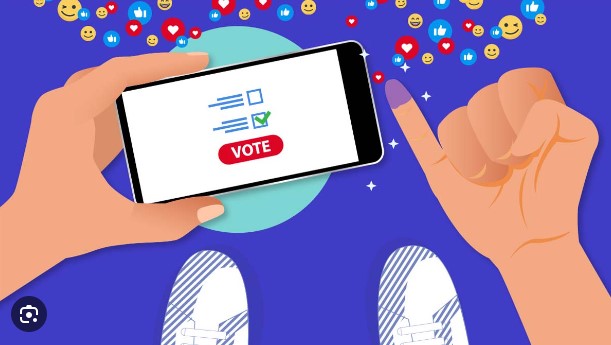Social media is a powerful tool for waking voters up. It’s persistent – the messages you put out on social media are always available to read, watch, and listen to again and again; it’s pervasive – it gives you a direct path to the voter’s eyeballs and ears, via their smartphones; and it’s dirt cheap – well, at least until Facebook and Twitter start to charge for their instant messaging and micro-blogging services (which, if gods be good, is never).
Q: How do you wake Lady Gaga up?
A: You p-p-p-poke her face.
But the benefits of using social media in any sustained way, for a focused objective such as voter education, can only be maximized if it is used properly. Used improperly social media can be ridiculously easy to ignore. Users can unfollow or even block you, for instance. Or, on Twitter, simply mute your tweets so they don’t see them. And if your messages aren’t getting to their intended audiences, as well-crafted as they might be, you might as well be singing sonnets into the void for all the good that’s gonna do you.
Fortunately, there are some fairly simple rules of thumb that can help.
First, keep the #VoterEd messages short and punchy. If you can manage it, make them humorous as well. One of the keys to social media success – and this applies especially well to voter education – is virality, or (as defined by a simple Google search) “the tendency of an image, video, or piece of information to be circulated rapidly and widely from one Internet user to another; the quality or fact of being viral.”
You want your message to be shared? Make it interesting enough to share. And “interesting enough to share” doesn’t always mean stuffed to the brim with information. More often than not, it is more effective to go with something that makes people laugh and want to find out more. The key here is to pique the user’s interest.
Which brings me to the second rule of thumb: always leave the user wanting to know more and give her somewhere to “Go-To” for more information.
Go-Tos can either be an actual link to a separate website that will act as your knowledge base; the on-line repository of detailed information. A hashtag (#) also functions as a Go-To because the tag essentially collects all social media postings bearing it, so that when the user clicks on the tag, she gets to see everything else that’s been tagged the same way. Occasionally – and perhaps least effectively – a Go-To can be a phone number or email address.
And speaking of piquing the user’s interest, the effective use of social media also requires the understanding that graphic content is king. There are many studies proving that the inclusion of an image in a post – whether on a micro-blogging site or in a long form blog – greatly increases virality. The success of sites like Pinterest, Snapchat, and even Tinder attest to this.
Third, effective and purposive communication should always be top-priority. That’s just a fancy way of saying make sure that everything you post has a point and is easily understood. Not always a very easy thing to accomplish, particularly on Twitter where the 140-character limit can make for some funny composition. Nevertheless, within the limits of the medium, always strive for comprehensibility. None of that “2 vote dnt 4get 2 bring ur kodigo so u wont 4get d names of d candidates.” You. Are. Not. Prince.
Fourth, don’t be afraid to hitch a ride on the latest fads. It might be cringe inducing to your refined sensibilities, but understand that people are talking about fads, and you want your #VoterEd message to be part of that conversation. Of course, when the trend has to do with fervent fandom, such as the #ALDUB fever that swept the nation last year, I would caution that you act with respect towards the fans. Not everyone will appreciate having “their” hashtag co-opted, and you risk sparking a backlash.
The same warning applies to “serious” hashtags like those dealing with calamities or important government announcements like #WalangPasok. In this cases, it’s not the backlash that you want to wary of; what you want to avoid is being a dick.
And fifth, cultivate your platform well. Don’t forget the social media rule of thirds. Hootsuite, the twitter client website and app, puts it this way: “⅓ of your social content promotes your business, converts readers, and generates profit. ⅓ of your social content should surface and share ideas and stories from thought leaders in your industry or like-minded businesses. ⅓ of your social content should be based on personal interactions and build your personal brand.”

